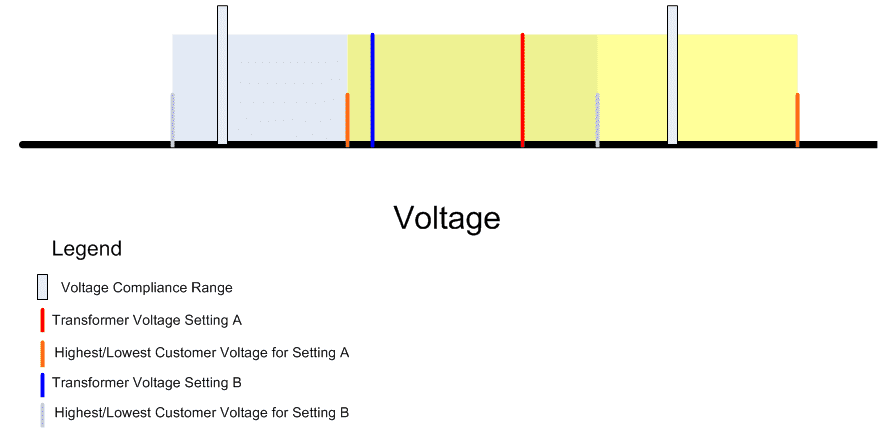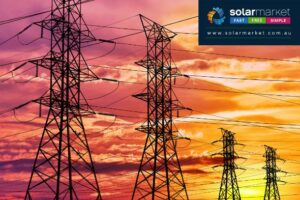With the massive surge of PV Solar System connections happening in Australia, there are a number of issues arising that Power Networks need to manage. The current result of these issues being that if a local area has too many PV systems already connected, you may have to reduce the size of the PV system you connect or, potentially, not be able to connect one at all.
Power systems in Australia are designed for power to flow from the generator to the customer. Voltage is controlled at key points between the generator and customer such that the voltage is always within a specific useable range. Introducing generation at the customer end (i.e. PV Solar Systems) is manageable on the small scale. However as this generation becomes more widespread two problems develop.
Problem #1: Voltage Imbalance
As some will know power is delivered from the network as 3 phase power. Typically residential customers will have a single phase connection, meaning they only draw power from 1 of the 3 phases. Even customers with 3 phase connections will only be drawing power from 1 of the 3.
For network stability and maintenance of good power quality you want these phases to be as balanced as possible, which was not a problem prior to PV Solar Systems since all customers were drawing power.
Now however, some customers have large PV systems which cause a very large imbalance on the local network. The bigger the PV system the bigger the imbalance of voltage. As a means to limit the level of imbalance, the size of PV system you are allowed to connect may be reduced if there are already large PV systems in your neighbourhood.
Problem #2: Voltage Rise
As mentioned before voltage is controlled by devices between the generator and the customer. With a PV system however the customer is also a generator and they have their own effect on voltage.
What happens is that in order to push power back into the network, the PV system has to bring the customer voltage higher than the network voltage, the larger the PV system the greater the voltage rise.
The consequence being that the customer pushes themselves outside of voltage compliance range and you can start getting the PV system tripping on and off as well as possibly some appliances in the house.
But here’s the kicker, the more solar you add to a local network the more you reduce the load on the network. When you reduce network load, network voltage goes up which means the more the voltage rise problem is compounded.
There are 2 solutions to this.
The first is to adjust distribution transformers. However because solar generation varies with season, as does load then you get the following situation.

What this shows is two transformer set points. However across a year in either setting you’ll get a situation where some customers are either dropping below or going above voltage compliance so to keep things working all year round you’d need to change the set point on the transformer twice a year. The cost of doing this would put power prices up at a guess, about 300%.
The alternative solution is to limit the size of PV systems that can be installed, depending on how much PV is in the local network already. Once a certain level of PV exists on a local network then new PV systems on that area maybe prohibited entirely, at least until network upgrades are done in that area (which are expensive).
In conclusion, the earlier you get solar installed the more likely it is you are going to be able to connect a larger PV system. In some cases if PV is already prevalent in an area you may not be able to connect at all until network upgrades are made in that area (or you pay for them yourself).










